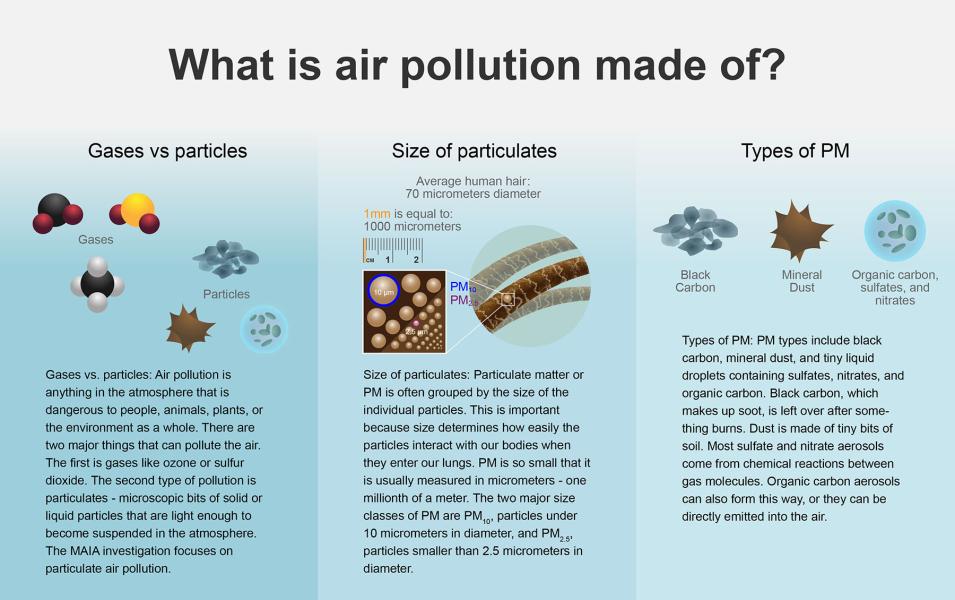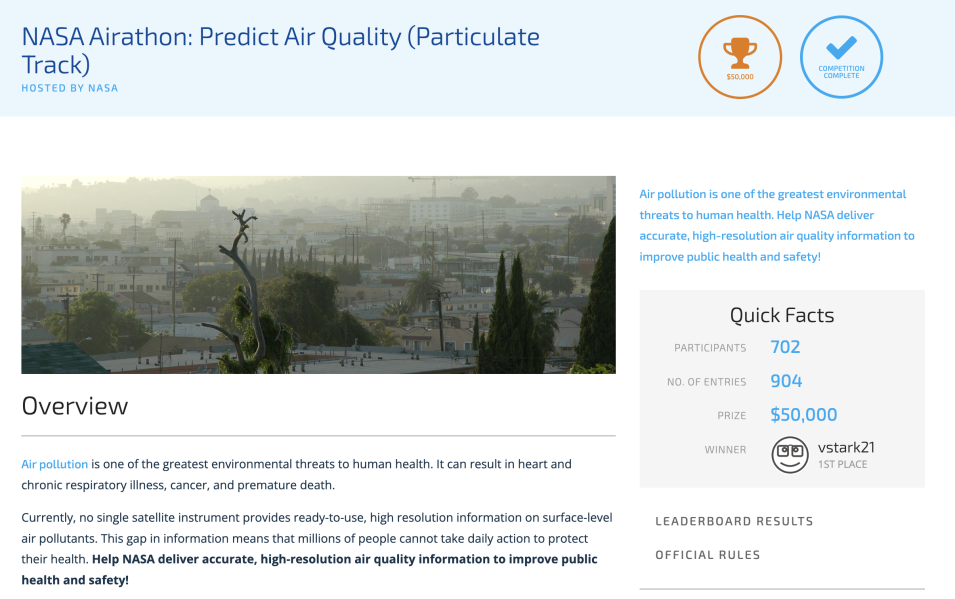Abigail (Abbey) Nastan, Systems Engineer with NASA Jet Propulsion Laboratory, California Institute of Technology
Research Interests: Using NASA Earth science data to improve life on Earth; improving the usability of NASA data products; creating effective visualizations of NASA data; developing engaging stories that show the value of NASA data; advancing diversity, equity, inclusion, and accessibility at the Jet Propulsion Laboratory (JPL) and throughout NASA
Research Highlights: If you go outside and take a deep breath, you’ll inhale a countless number of solid particles and liquid droplets known as aerosols. Aerosols drift in Earth’s atmosphere, from the surface up to the stratosphere, and range in size from a few nanometers (the width of a virus) to the diameter of human hair. But don’t let their small size fool you—when it comes to Earth’s climate and our human health, aerosols are a big deal.
The bulk of the aerosols, about 90% by mass, have natural origins—think ash from erupting volcanoes, smoke from forest fires, dust from sandstorms, and moisture from sea spray. The remaining 10% come from a variety of anthropogenic sources, such as emissions from the burning of fossil fuels, the release of synthetic chemicals into the air, etc. Yet, wherever aerosols come from, their ability to absorb or scatter sunlight can impact the climate by warming or cooling Earth’s surfaces and affecting cloud formation and precipitation. More importantly, they can cause severe impacts to human health. According to the Global Burden of Disease study, exposure to high levels of air pollution is a significant cause of premature death and ill health worldwide.
To better understand how aerosols impact the climate and human health, scientists rely on an array of ground-, aircraft-, and satellite-based instruments to detect the presence and movement of aerosols, assess the size of aerosol particles, and measure of the amount of light that aerosols absorb or scatter.
NASA obtains measurements of aerosols from several satellite instruments—such as the Moderate Resolution Imaging Spectroradiometer (MODIS) and Multi-angle Imaging SpectroRadiometer (MISR) aboard the Terra satellite, a second MODIS instrument aboard the Aqua satellite, and the Visible Infrared Imaging Radiometer Suite (VIIRS) aboard the joint NASA/NOAA Suomi National Polar-orbiting Partnership (Suomi NPP) and NOAA-20 satellites—and more are on the way. NASA’s Multi-Angle Imager for Aerosols (MAIA) mission, which is currently in development, will make the radiometric and polarimetric measurements needed to characterize the sizes, compositions, and quantities of the particulate matter in air pollution. In addition, the Tropospheric Emissions Monitoring of Pollution (TEMPO) mission, which is slated for launch later this year, will determine what’s in the air we breathe by monitoring major air pollutants across the North American continent.


